#Impactonpopularculture
Explore tagged Tumblr posts
Text
Don Quixote: A Timeless Tale of Imagination and Idealism
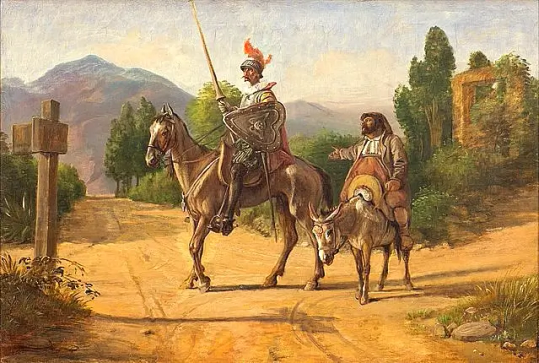
Exploring the World of Don Quixote
Prepare to embark on a captivating journey into the world of "Don Quixote," a literary masterpiece created by the brilliant Miguel de Cervantes. This classic novel is not just a story; it's an exploration of the extraordinary power of imagination, inviting readers to delve into a realm where the lines between reality and fantasy blur. In this adventure, we'll take a closer look at the enduring appeal of Don Quixote, a character who has left an indelible mark on literature and popular culture worldwide. You'll discover why this classic tale continues to captivate readers of all ages, making it a beloved treasure for both the young and the young at heart.
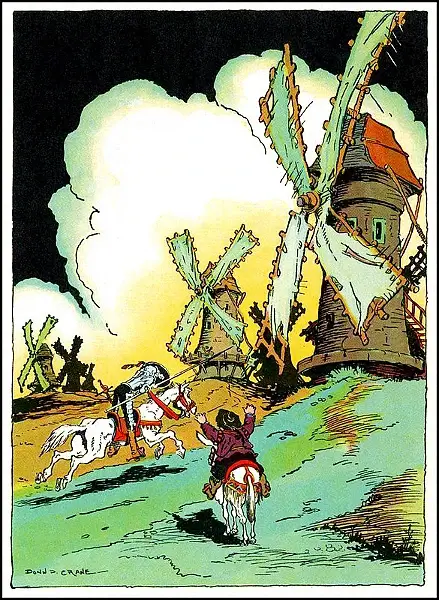
Donn P Crane Illustration from Don Quixote titled Windmills. Photo by Halloween HJB. Flickr.
Who is Don Quixote?
Don Quixote, brought to life by the genius of Miguel de Cervantes, first appeared in "The Ingenious Gentleman Don Quixote of La Mancha" in 1605. He is not just a character; he is an embodiment of noble ideals and an unwavering commitment to pursuing dreams, even when they seem improbable. But what makes Don Quixote truly unforgettable are his adventures. From tilting at windmills he mistakes for giants to freeing prisoners who are, in fact, convicts on their way to prison, his escapades are both humorous and thought-provoking. Joining him on these quests is the loyal Sancho Panza, a character whose witty humor often clashes with Don Quixote's idealism, creating a dynamic that keeps readers eagerly turning the pages.
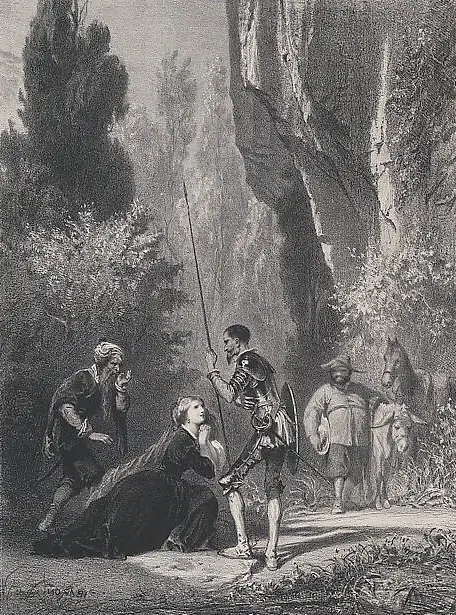
The Princess of Micomicona, from Don Quixote. Photo by Henri-Charles-Antoine Baron. Met Museum.
Themes and Symbolism: What Lies Beneath
One of the enduring charms of "Don Quixote" is its exploration of the power of the human imagination. Quixote's world is filled with giants, princesses, and chivalric adventures, showcasing the incredible capacity of the human mind to shape our reality. Yet, beneath the surface, the novel also raises thought-provoking questions about the nature of reality. It challenges us to consider what is real and how we determine the difference in a world where facts and fiction can often blur. The use of symbolism in "Don Quixote" is another facet that makes this classic an educational and thought-provoking read. Dulcinea, the maiden in distress, represents ideals, beauty, and honor, and yet, she is nothing more than a product of Quixote's vivid imagination.
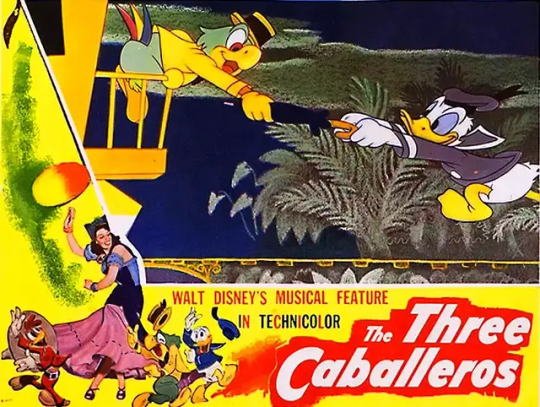
The Three Caballeros, Disney, 1945. Photo by Rossano. Flickr.
Don Quixote's Legacy: Impact on Literature and Popular Culture
"Don Quixote" has proven itself to be more than a mere novel; it's a cultural touchstone. Its impact on literature can be seen in the works of authors like Shakespeare and Mark Twain. Its influence stretches into popular culture, inspiring adaptations in film, television, and even music. From Orson Welles' masterpiece to Disney's "The Three Caballeros," Don Quixote's spirit of adventure and passion for life continues to leave an indelible mark.
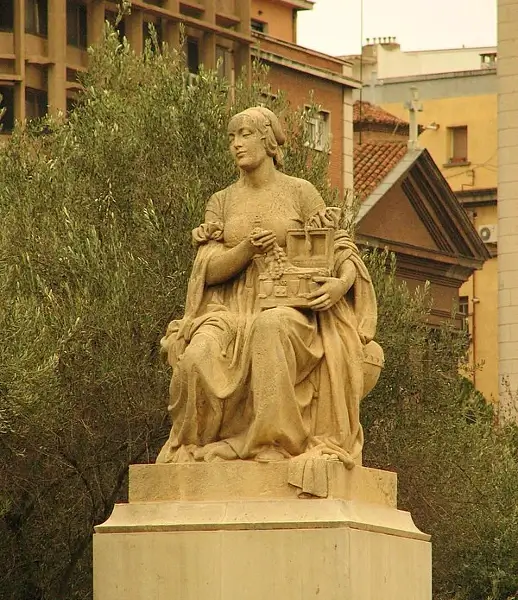
Dulcinea del Toboso. Photo by Tnarik Innael. Flickr.
Exploring the Characters
Sancho Panza Sancho Panza, the loyal squire, brings a balance of humor and practicality to the narrative. His witty presence often challenges the idealism of his master, providing an engaging counterpoint that keeps readers entertained. Dulcinea Dulcinea, the ethereal love interest, raises profound questions about the power of idealized imagery. She represents the intangible beauty and honor that Don Quixote tirelessly seeks, and yet, her existence remains solely within the realm of imagination. The Duke and Duchess These aristocratic characters, who manipulate Don Quixote's delusions, remind us of the dual nature of power and control, adding depth and intrigue to the story. The Priest and The Barber In contrast, The Priest and The Barber, characters who attempt to ground Don Quixote in reality, exemplify the age-old conflict between reason and imagination, prompting readers to contemplate the fine line between the two. The Innkeeper and The Prostitutes The Innkeeper and The Prostitutes serve as a striking reflection of the moral dilemmas that often challenge Don Quixote's noble principles. They confront the protagonist with the gritty reality of a world that doesn't always align with his chivalric ideals.
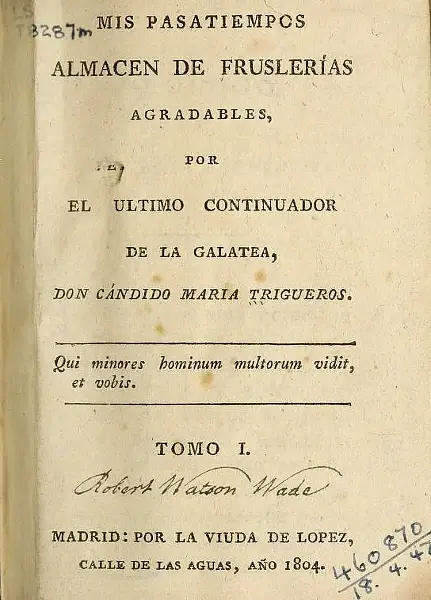
Mis pasatiempos, almacen de fruslerías agradables - por el ultimo continuador de la Galatea, Cándido Maria Trigueros. Biblioteca de Humanidades.
The Author Behind the Madness: Miguel de Cervantes
Miguel de Cervantes, the brilliant mind behind "Don Quixote," overcame adversities to become one of the most influential writers in the Spanish language. His life story is a testament to the power of resilience and determination. Cervantes' literary contributions extend far beyond "Don Quixote." His first novel, "La Galatea," is recognized as Spain's initial foray into the world of novels. Additionally, his collection of plays and other works further solidified his reputation as a literary icon.
Why Don Quixote Endures as a Classic
"Don Quixote" endures as a classic because it not only tells an entertaining tale but also imparts essential lessons. It encourages readers to embrace their dreams, even when the odds seem insurmountable, and emphasizes the significance of friendship and loyalty. So, if you haven't had the pleasure of experiencing this literary masterpiece, now is the time. "Don Quixote" offers an unforgettable adventure that transcends time and culture, making it a story that continues to captivate and inspire readers of all ages.
Conclusion
"Don Quixote: Timeless Tale and Impact" invites readers on a captivating journey through the imaginative realm of Miguel de Cervantes' literary masterpiece. This classic novel, with its classic character, has transcended time and culture to leave an indelible mark on literature and popular culture worldwide. The enduring appeal of Don Quixote lies in its exploration of the power of imagination, the blurred lines between reality and fantasy, and the symbolic depth within its narrative. Its themes of pursuing dreams and the importance of friendship and loyalty continue to resonate with readers, making it a cherished classic for both men and women aged 35-60. As we reflect on the legacy of Miguel de Cervantes, it becomes evident that his work extends far beyond Don Quixote. It demonstrates his profound influence on the Spanish language and world literature. Moreover, the enduring power of storytelling to captivate and inspire is a testament to the timelessness of this literary treasure. So, whether you're revisiting this classic or diving into it for the first time, the world of Don Quixote promises an enriching experience that will forever remain etched in the annals of literature. Sources: THX News & Wikipedia. Read the full article
#CharactersinDonQuixote#Classicnovel#DonQuixote#Imaginativeworld#Impactonpopularculture#MigueldeCervantes#MigueldeCervantes'life#Powerofimagination#Symbolisminliterature#ThetimelessDonQuixote
1 note
·
View note